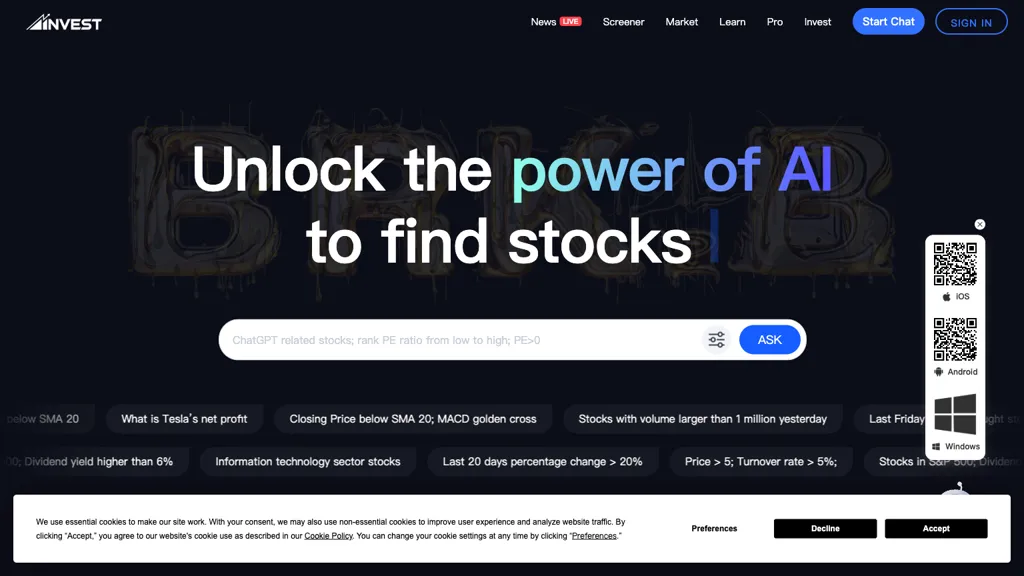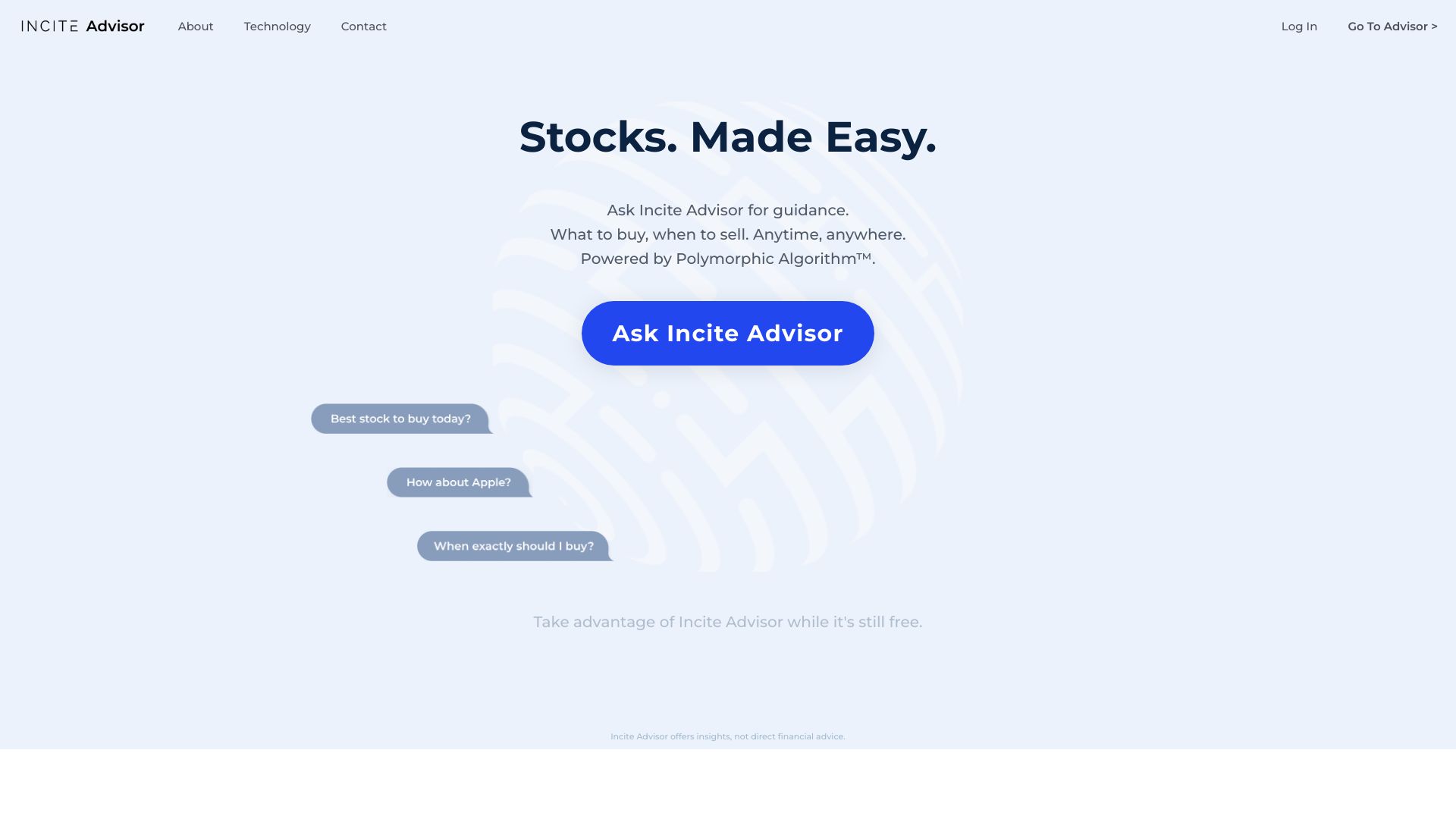20 Excellent Tips To Selecting AI Stock Predictions Analysis Sites
20 Excellent Tips To Selecting AI Stock Predictions Analysis Sites
Blog Article
Top 10 Tips For Evaluating The Cost And Cost Of Ai Platform For Predicting And Analyzing Stocks
It is important to assess the price and cost of AI trading platforms which predict or analyze stock prices. This can help you avoid any hidden costs or charges. Pricing structures vary widely and it is crucial to know what you are getting for your price. Here are 10 top strategies for evaluating price and cost.
1. Understanding Pricing Model
Subscription based: Find out whether the service charges per month or annually, and the features that each tier offers.
Pay-per-use: Determine if you are charged according to the use of the platform (e.g. number of trades or requests for data).
Freemium: Find out if a platform has an unrestricted free tier or costs extra for premium features.
2. Compare Pricing Tiers
Comparing the features included in each price level (e.g. basic professional, professional, and enterprise).
Scalability - Ensure that the pricing levels you choose to use are in line with your needs.
Upgrade flexibility: Check if it is possible to upgrade or lower the plan based on your changing needs.
3. Evaluate Hidden Costs
Fees for data. Check if the platform charges fees for accessing premium data.
Brokerage fees - Make sure for any additional costs are charged by the platform to trade execution or integration with brokers.
API usage. Determine whether there are additional costs associated with API access and/or high-frequency use.
4. Demos and Free Trials, and Test Drives
Trial period: Test platforms that give you a no-cost demo or trial to try their capabilities.
Trial limitations: Check whether the trial is free and includes all of the features, or if it is limited in its functionality.
No-commitment options: Ensure you have the option to cancel your trial without being charged if the platform doesn't meet your needs.
5. Take a look at the latest deals and offers
Discounts for annual plans: Check for discounts provided by the platform in comparison to the monthly plans they offer.
Referral programs. Check if the platform offers discounts or credits to refer users.
Pricing for institutions In the event that you are part of an organization that is larger than you, ask about pricing for bulk orders or institutions.
6. Assess Return on Investment (ROI)
Cost vs. value - Find out if the platform's capabilities, features, and predictions are worth it. It can save you money and improve your trading strategies.
Research the platform's performance track record or user testimonials to determine its potential ROI.
Alternative costs: comparing prices for the platform with the costs that might be incurred if the platform isn't used (e.g. lost opportunities, manual data analysis time).
Review Cancellation & Refund Policies
Terms of cancellation: Be sure you are able to make a cancellation without hidden costs or penalties.
Refund policy: Find out whether the platform will reimburse the amount you paid for.
Auto-renewal. Check whether the platform automatically renews your subscription. If so, you'll need to know how to optout.
8. Pricing should be transparent
Clear pricing page - Be sure there aren't any hidden fees on the pricing page.
Customer Support: To clarify unclear pricing details and additional charges, call customer support.
Contract Terms: Read the contract's terms to find out the existence of penalties or obligations for the long-term.
9. Compare with Competitors
Comparison of features Comparison of pricing and features offered by the platform to the competition to ensure that you're getting the best deal.
Feedback from users: Learn what others think of the platform to determine whether it's worth the price.
Market positioning: Find out if it is priced as an expensive, mid-tier or budget option and whether it is in line with your expectations.
10. Examine the Long-Term Costs
Price increases Look through the history of the platform to determine how often it has raised prices.
Updates to features: See whether your current plan has new features or requires an upgrade.
Costs of scaling: Make sure the platform's price remains affordable in the event that your trading activities or data requirements increase.
Bonus Tips
Test multiple platforms. You can try multiple platforms for free and compare them.
Negotiate prices: If have a large number of customers or belong to an organization, you can ask for custom pricing and discounts.
Find free educational tools and resources. Some platforms provide tools for education or resources that are complimentary.
With these suggestions You can easily evaluate the costs and prices of AI trading platforms that predict stocks or analyze them, ensuring you choose one that fits your budget and delivers the features and performance you want. A platform priced well must strike a good compromise between functionality, affordability and performance, allowing you to make the most of the value of your trading. Check out the top over here for ai chart analysis for website info including market ai, ai for stock predictions, best ai trading software, using ai to trade stocks, best ai trading app, ai trade, ai for trading, ai stock trading bot free, ai stock, chart ai trading assistant and more.
Top 10 Tips For Assessing The Risk Management Of Ai Stock Analyzing And Predicting Trading Platforms
A trading platform that uses AI to analyze and predict stocks should have a solid risk management system. This will safeguard your capital, and help limit any losses that could occur. A platform that has robust tools for managing risk can aid in the navigating of volatile markets and allow you to make educated choices. Here are 10 suggestions for evaluating the risk management capabilities of the platform.
1. Evaluate Stop-Loss and Take-Profit Features
Customizable Levels: Be sure the platform allows you to create individual stop-loss limits and goals for taking profits in your trading strategies or trades.
Trailing stops: Make sure the platform you are using supports trailing stop, which automatically adjust as the market shifts in your direction.
Guarantees on stop-loss: whether the platform offers stop-loss guarantee, which will ensure that your position will close at a certain price, even in volatile markets.
2. Tools to Measure Positions
Fixed amount. You should have the option to define your positions' sizes as a fixed dollar amount.
Percentage: Determine if you are able to determine your positions' sizes in proportion to the value of your portfolio. This will help you manage risk proportionally.
Risk-reward ratio: Check whether the platform allows setting risk-reward ratios on individual trades or strategies.
3. Check for Diversification Assistance
Multi-asset trading : Make sure the platform permits you to trade across a variety of asset classes, such as ETFs, stocks and options. This will allow you to diversify your portfolio.
Sector allocation: See if the platform provides tools for monitoring and managing the exposure of sectors.
Diversification of geographic risk: Check if the platform supports trading in international markets to spread geographic risk.
4. Evaluating margin and leverage controls
Margin requirements - Ensure that the platform explains the requirements for margins clearly.
Check to see whether you are able to set leverage limits in order to limit risk exposure.
Margin calls: Make sure you are receiving prompt notifications from the platform to avoid account liquidation.
5. Assess the risk Analytics and Reporting
Risk metrics: Make sure the platform has key risk metrics to your portfolio (e.g. Value at Risk (VaR) Sharpe ratio and drawdown).
Analysis of scenarios: See if the platform allows you to model various market scenarios in order to evaluate the potential risk.
Performance reports: Check whether the platform has detailed performance reports that include the risk-adjusted return.
6. Check for Real-Time Risk Monitoring
Monitoring of your portfolio: Make sure the platform you use allows you to monitor your portfolio in real time.
Alerts: Check if you can receive real-time notifications for risk related (e.g. Stop-loss triggers or margin breaches).
Make sure you have dashboards that can be customized to give you an overview of your risk profile.
7. Testing of Backtesting and Stress Evaluation
Stress testing - Ensure that your platform allows you to stress test strategies and portfolios under extreme market conditions.
Backtesting. Find out if the platform supports backtesting, which involves the application of historical data to assess the risk and the performance.
Monte Carlo: Verify the platform's use of Monte-Carlo-based simulations to assess risk and modeling a range or possible outcomes.
8. Risk Management Regulations - Assess the compliance
Compliance with the regulatory requirements: Ensure that your platform is in compliance with the applicable risk management regulations in Europe as well as the U.S. (e.g. MiFID II).
Best execution: Check if the platform follows best execution practices, ensuring trades are executed at the best possible price, minimizing slippage.
Transparency. Make sure the platform is transparent and makes clear disclosures of risks.
9. Examine the User-Controlled Risk Parameters
Custom risk rules: Ensure the platform permits you to create custom risk management guidelines (e.g. the maximum daily loss, or maximum size of position).
Automated risk control: Check that the platform is able to automatically enforce rules for risk management according to your pre-defined parameters.
Manual overrides - Check whether your platform permits you to manually override automated risk control.
User feedback from reviewers and case research
User reviews: Study user feedback and analyze the effectiveness of the platform in managing risk.
The case studies or testimonials must be used to highlight the platform's capabilities to mitigate risks.
Community forums: Check whether the platform hosts an active user community where traders discuss risk management tips and strategies.
Bonus Tips
Trial time: You can use a demo or free trial to test out the risk management tools available on the platform.
Support for customers: Ensure whether the platform provides solid support for questions or concerns relating to the management of risk.
Educational resources: Check whether the platform has education resources or videos on risk management best practices.
These tips will assist you in evaluating risk management capabilities provided by AI platform for predicting or analyzing stocks. You can select a platform that will safeguard your investment while limiting possible losses. Risk management tools that are durable are crucial for trading on volatile markets. Follow the top rated stock trading ai advice for website recommendations including best ai stocks, stocks ai, best ai for stock trading, can ai predict stock market, best ai stock prediction, ai stock prediction, ai investment tools, ai for trading stocks, best ai stock prediction, free ai stock picker and more.